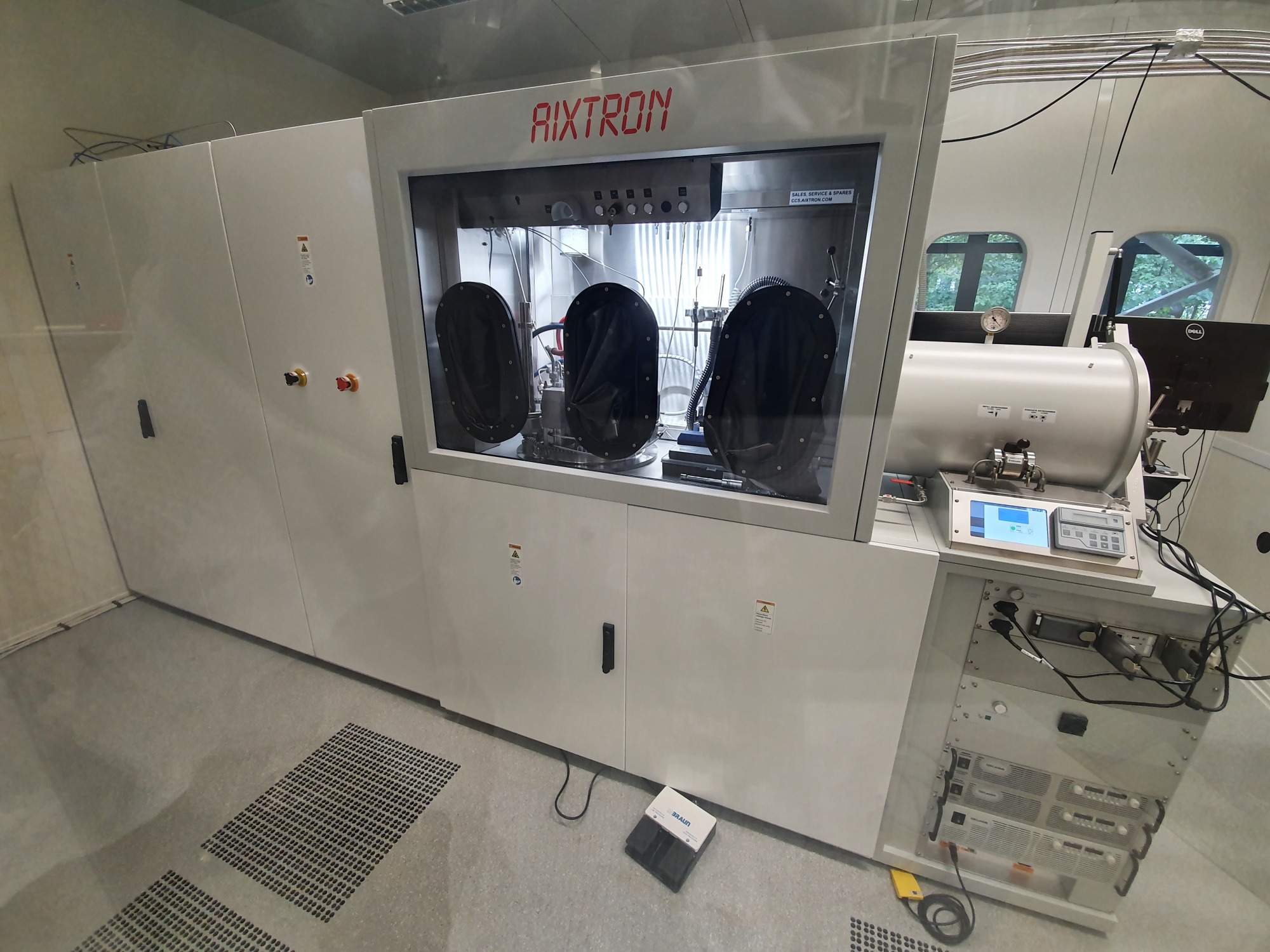Components for High Frequency Electronics
High-frequency components made in Duisburg
In the Center for Semiconductor Technology and Optoelectronics (ZHO), the department BHE is engaged in research on specialized semiconductor materials and technologies for high-frequency wireless communication and terahertz applications
In the summer semester of 2024 we offer the following courses:
- Festkörperelektronik
- Elektronische Schaltungen
- Praktikum Elektronische Schaltungen
- Praktikum Operationsverstärker
- NanoEngineering Praktikum
please sign up for all courses in LSF
Also we offer continuously internships and theses (B.Sc., M.Sc., Ph.D.) as well as jobs for student assistants.
Information on coursesStart of lectures/exercises in the summer semester of 2024:
- Festkörperelektronik
- Hochfrequenzschaltungen und Leistungselektronik / Elektronische Schaltungen

BHE-Seminar
To exchange information within the working group and with interested participants about current research topics and work in the Department Components for High-Frequency Electronics, we hold weekly seminar presentations. The theses colloquiae and student project presentations are part of this seminar series. The seminar is open to the public, and we look forward to your participation. Further information about the seminar (schedule and information about participation) can be found here.
Meldungen aus der Kategorie 'Lehre'
(zurück zur Kategorie '')

01.05.2021 - 08:00:00
BHE Seminar

01.09.2020 - 08:00:00
Stellen für Studentische Hilfskräfte

10.08.2020 - 08:00:00
Abschlussarbeiten
NRW.Forschungsinfrastrukturen THzIZ


Terahertz Integration Center
The THz semiconductor chips produced at the ZHO by the BHE and OE departments are well known in the international research community -- now the ZHO is creating the possibilities to realize complete THz modules. This will enable cooperation with industry and research institutes on the system level, for the applications of the day after tomorrow: 6G Terahertz communication with more than 100 Gigabit/s data rates, state-of-the-art radars, material recognition and medical imaging. UDE is receiving over 6.5 million euros from state and EU funds for new production facilities and equipment from the EFRE/NRW funding line. research infrastructures. This will create a university terahertz integration center (THzIZ) that is unique in Germany and covers the entire spectrum from materials and chip technology to modules and systems.
BMBF Rahmenprogramm Mikroelektronik ForLab SmartBeam

Microelectronics Research Laboratory Duisburg-Essen for High-Frequency Beam Forming
Electronic and photonic high-frequency chips are developed in the research laboratory Microelectronics (ForLab) SmartBeam. New applications in robotics and autonomous traffic require high-resolution radar systems with the ability to distinguish between materials. This can be achieved with carrier frequencies in the THz frequency range. In order to generate THz radiation with sufficient intensity, individual THz emitters must be interconnected. These "phased array" configurations allow deflection of the beam in any direction to scan the environment -- this is the goal of ForLab SmartBeam.
The ForLab SmartBeam is funded by the BMBF with 4 M€ until 2021: a new metal-organic vapor phase deposition (MAPD) facility for the growth of semiconductor structures for THz transistors, an atomic layer deposition (ALD) facility and THz measurement instruments will be purchased in this project. Besides BHE, the OE and DSV departments are involved in ForLab.
Read moreJoint Lab UDE / FBH InP Devices Joint Lab

Development of innovative materials and components for terahertz electronics
The UDE has founded the Joint Lab "InP Devices" with the Ferdinand Braun Institute in Berlin.
The Joint Lab accesses the complementary infrastructures of FBH and UDE in order to combine the fundamental materials and device research at UDE - with a focus on indium phosphide (InP) - with the industrial process technology of FBH. With InP-based monolithic integrated RF circuits (MMIC), highest frequencies in the Terahertz (THz) band can be achieved and thus new system applications can be realized at low cost. The partners jointly research innovative semiconductor structures and components for THz applications and develop integrated components for the use of electronic THz technology. Applications include non-destructive material testing, high-resolution medical imaging and broadband communication systems.
Read more
DFG Sonderforschungsbereich/Transregio SFB/TRR 196 MARIE

Mobile Material Transceiver
The department BHE is involved in the SFB/TRR MARIE with two subprojects: C02 and C11. Both projects deal with the investigation of efficient electronic terahertz sources. These sources are realized with resonant tunnel diodes (RTD) and heterostructure bipolar transistors (HBT) by means of special semiconductor processes in the material system indium phosphide. Oscillators can still be operated efficiently at THz frequencies. Of particular importance is the control of the radiated frequency and the phase position of the oscillators in order to be able to interconnect them in fields. Here the principle of "subharmonic injection locking" is applied, i.e. the oscillators are phase-locked to a control oscillator with 2x or 3x low frequency.
Read more

